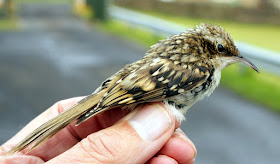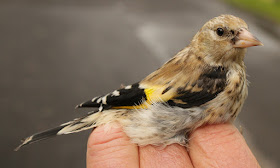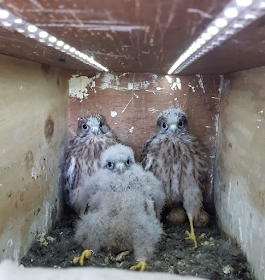Andy’s shiny new battle wagon didn’t bring much luck today. Just a week ago we had the best catch of the autumn so far with 43 birds, https://anotherbirdblog.blogspot.com/2020/07/business-as-usual.html.
This morning we set up the ringing station in the hatchback expecting a good catch on such a fine and warm morning. If anything, the south-easterly breeze was a little too blowy with the glaring sun on mist nets providing an unwanted addition.
There seemed to be few birds around and we struggled to even
reach double figures with 4 Willow Warbler, 2 Goldfinch, 2 Wren, 1 Robin and 1
Chiffchaff.
Willow Warbler
All Chiffchaffs look unkempt at this time of year. Both adults and juveniles undergo their respective moults. The one below is in post-juvenile moult.
In contrast to our poor catch the morning provided a good
show of visible migration by Swallows. The four hours with not much to do allowed
time and opportunity to watch and count groups of Swallows. In the clear skies they
arrived from the north in small gangs of 5-15 individuals that fed on the wing around
the buildings and woodland edge before each one of them headed south. We counted 150 + in four hours of observation.
July 31st may seem early for Swallows to begin their long migration but that is
exactly what they must do to reach South Africa for their second summer.





















































